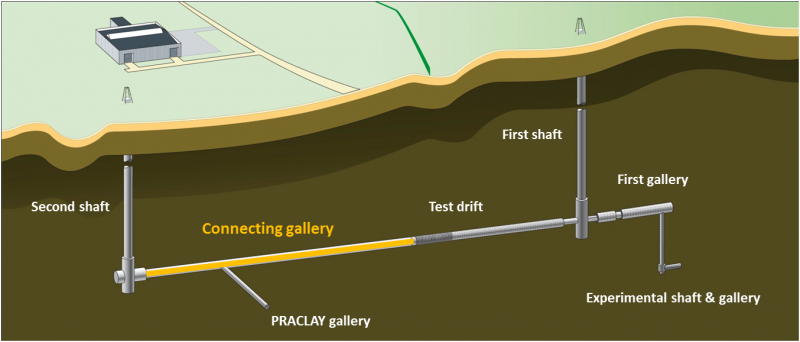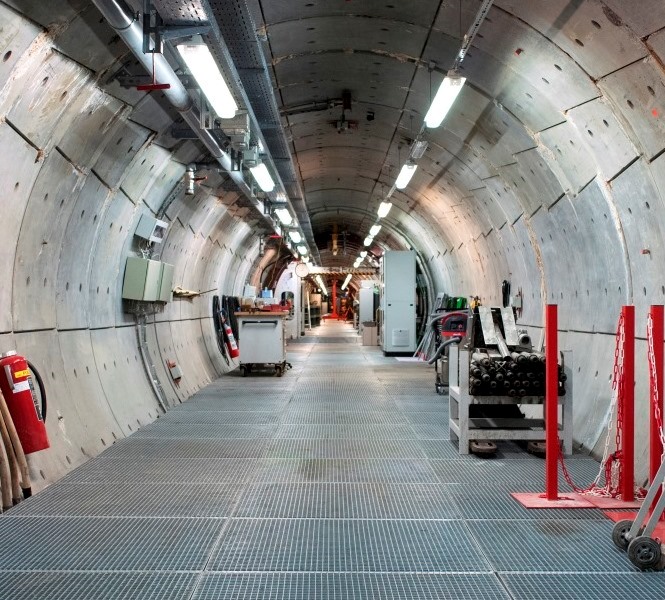Connecting gallery (2001 - 2002)
 |
 |
The current Belgian design of ONDRAF/NIRAS for geological disposal of radioactive waste in poorly indurated clay is a system of vertical shafts that give access to a network of horizontal galleries for transport and disposal of the waste. The construction of the HADES underground research laboratory (URL) in the Boom Clay formation, which began in 1980, was important for testing and improving the excavation and construction techniques used and for demonstrating the technical feasibility of building an underground repository in poorly indurated clay.
The construction of the earlier parts of the HADES URL between 1980 and 1987 proceeded manually, achieving a relatively low progress rate of 2 metres a week. During the 1990s, it was decided to extend the HADES URL with an 80 m long gallery, connecting the existing HADES URL with a newly built second shaft. This second shaft was dug between 1997 and 1999. The Connecting gallery was constructed in 2001 and 2002, using an industrial tunnelling machine. This was the first time that industrial techniques would be used to excavate a gallery in the Boom Clay at such depth, making it an important milestone in the feasibility demonstration programme of ONDRAF/NIRAS.
OBJECTIVES
The first objective was to demonstrate the feasibility – from both a technical and an economic point of view – of constructing galleries in poorly indurated clay, employing industrial techniques that could be used for the full-size repository.
The second objective was to gather as much data as possible regarding the characteristics of the host rock during and after excavation. To achieve this objective, a large instrumentation programme in and around the Connecting gallery was set up as part of the CLIPEX project in order to improve understanding of the hydro-mechanical response of the host rock during and after the construction of a horizontal gallery. As the clay host rock is the main barrier in the disposal system, this understanding is important to be able to assess the long-term safety of a repository.
OUTCOME
The 85-metre Connecting gallery was constructed in less than 6 weeks with an industrial tunneling machine. Both excavation of the clay and installation of the gallery lining were carried out fully automatically. To limit the disturbance, an expanding lining type was used: the wedge-block system; for the same reason, the lining was installed as soon as possible after excavation and a minimal excavation rate (2m/day) was imposed. The successful construction demonstrated the technical and economic feasibility of constructing galleries at great depth in poorly indurated clay.
A systematic observation of the face and side-walls during the excavation provided a useful database of the shape and orientation of encountered fractures. This way, the origin of the fractures could be explained and substantiated. No evidence of naturally occurring fractures was found. On the other hand, qualitative evidence of self-sealing of the host rock was encountered.
SUMMARY
REFERENCE PUBLICATIONS
The Connecting gallery. The extension of the HADES underground research facility at Mol, Belgium.
Bastiaens W., Bernier F., Buyens M., Demarche M., Li X., Linotte J-M., Verstricht J. EURIDICE report 03-294, Mol, Belgium, 2003, 98pp.
